Feather loss is a significant concern for bird owners, as feathers provide protection, insulation, flight, and visual signals to other birds. While feather loss is usually not fatal, it can be a sign of an underlying health issue. This article will explore the various causes of feather loss in birds and provide essential care tips to help restore your bird’s plumage health.
Key Takeaways
- Feather loss can be caused by a variety of factors, including viral diseases, parasitic infestations, bacterial and fungal infections, nutritional deficiencies, and underlying health conditions.
- Identifying the root cause of feather loss is crucial for effective treatment, often requiring a thorough veterinary examination and diagnostic tests.
- Proper environmental conditions, mental stimulation, and a balanced diet are essential for preventing and managing feather-related issues in birds.
- Behavioral factors, such as stress, boredom, and cage mate aggression, can also contribute to feather loss and require specialized care.
- Regular veterinary check-ups and prompt intervention are key to addressing feather loss and maintaining the overall health and well-being of pet birds.
Understanding Feather Loss in Birds
Feather loss in birds can occur for a variety of reasons, ranging from natural molting processes to more serious underlying health conditions. Understanding the causes of feather loss in birds, as well as the physical and behavioral signs, is crucial for providing proper care and treatment.
Causes of Feather Loss
Feather loss can be attributed to several factors, including viral diseases, parasitic infestations, bacterial and fungal infections, nutritional deficiencies, injuries, and underlying health conditions. Some birds may also engage in self-mutilation, such as feather plucking, due to behavioral or psychological factors.
Physical and Behavioral Signs
The physical signs of feather loss in birds can include bare skin patches, broken or disfigured feathers, and an overall unkempt appearance. Behavioral signs may include excessive preening, feather plucking, and self-mutilation.
It’s important to note that feather loss can have a significant impact on a bird’s well-being and ability to function, particularly if it affects the wings or tail. Prompt veterinary attention is often necessary to identify and address the underlying cause of the feather loss.
“The feathers are often a reflection of the general well-being of the bird.”
By understanding the causes of feather loss in birds and recognizing the physical and behavioral signs, bird owners can take proactive steps to ensure the health and well-being of their feathered companions.
Viral Diseases and Feather Loss
Certain viral diseases can wreak havoc on a bird’s feathers, leading to widespread loss and disfigurement. Two of the most concerning viral culprits are psittacine beak and feather disease (PBFD) and polyomavirus.
PBFD is a fatal condition caused by a virus that suppresses the bird’s immune system. This leads to abnormal feather growth and easy shedding, leaving the bird vulnerable to secondary infections. Polyomavirus can also contribute to feather loss, further complicating the bird’s health. Prompt diagnosis and appropriate treatment are crucial for managing these viral diseases.
- Diagnosis of viral diseases often involves microscopic examination of feathers or cultures to detect the presence of the viruses.
- Polyomavirus and PBFD can severely weaken a bird’s immune system, leaving them susceptible to other health issues.
- Early signs of PBFD in young birds may include color changes and easily broken feathers at the base.
- Adult birds can carry and shed these viruses for life, posing a risk to uninfected birds in the same household.
Managing viral diseases in birds requires a multi-faceted approach, including a balanced diet, access to UV-B light, regular veterinary check-ups, and targeted medical therapies to address secondary infections. In severe cases, quality of life discussions with a veterinarian and family members may be necessary to determine the best course of action, including the difficult decision of euthanasia.
“Viral diseases like PBFD and polyomavirus can have devastating effects on a bird’s feathers and overall health. Early detection and appropriate treatment are crucial for the well-being of our feathered companions.”
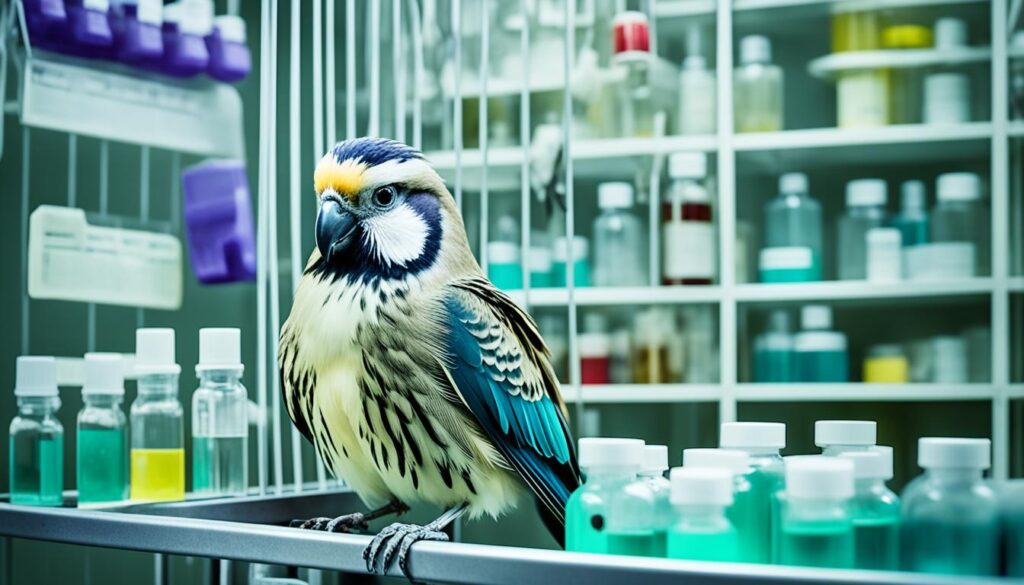
Parasitic Infestations
Parasitic infestations can also be a culprit behind feather loss in birds. These pesky parasites can wreak havoc on a bird’s health, leading to irritation, discomfort, and ultimately, feather-plucking behavior. Let’s dive into the two main types of parasitic infestations that can cause feather loss: knemidokoptes and mites and lice.
Knemidokoptes (Scaly Face, Scaly Leg)
One of the most common parasitic infestations is knemidokoptes, a skin parasite that causes a condition known as “scaly face and leg.” This skin mite can result in the thickening of the skin and subsequent feather loss on the bird’s face, beak, and legs. Symptoms include crusty, thickened skin and lesions that can be challenging to treat if left unaddressed.
Mites and Lice
In addition to knemidokoptes, feather mites and bird lice can also contribute to feather loss in birds. These parasites feed on the bird’s skin and feathers, causing irritation and leading to excessive preening and feather-picking behavior. While lice are not as common in pet birds, they can be prevalent in wild birds and some aviaries, potentially causing a “moth-eaten” appearance to the feathers.
Proper diagnosis and treatment with prescription medications are essential to effectively manage these parasitic infestations causing feather loss. Veterinary professionals can provide the necessary guidance and treatment plan to help your feathered friend regain their healthy, vibrant plumage.
“Parasites can cause discomfort, malnutrition, and even fatal complications if left untreated.”
Bacterial and Fungal Infections
Bacterial and fungal infections can be a significant contributor to skin irritation and feather loss in birds. Staphylococcus and Pseudomonas are examples of bacteria that may cause skin issues, leading to self-mutilation and subsequent feather loss. Fungal diseases, such as Aspergillus and Candidiasis, can also trigger skin irritation and feather disorders.
According to research, bacterial and fungal infections are listed as one of the common causes for birds plucking their feathers. Skin irritation from these infections can lead to excessive grooming and feather picking, ultimately resulting in feather loss. Addressing the underlying health problems can help cease this problematic behavior in birds.
Veterinary diagnosis through skin cultures and appropriate treatment with antibiotics or antifungal medications are necessary to address these infections. Neglecting to treat resident birds with infections can also put any new additions to the flock at risk of contracting these issues.
Staphylococcus and Pseudomonas Infections
Staphylococcus aureus, a common bacterial infection, can lead to skin irritation and feather picking in birds. Similarly, Pseudomonas bacteria can also contribute to skin problems, prompting the bird to excessively groom and pluck its feathers.
Fungal Infections: Aspergillosis and Candidiasis
Fungal diseases, such as Aspergillosis and Candidiasis, can also cause skin irritation and feather disorders in birds. Aspergillosis, a fungal disease, can lead to respiratory issues and feather picking, while Candidiasis, a yeast infection, may manifest as crop stasis, regurgitation, diarrhea, and weight loss, often prompting the bird to excessively groom and pluck its feathers.
“Addressing underlying health problems can lead to a cessation of feather plucking in birds.”
It is crucial to diagnose and treat these bacterial and fungal infections promptly to alleviate the bird’s discomfort and prevent further feather loss. Proper veterinary care and the use of appropriate antibiotics or antifungal medications can help restore the bird’s health and well-being.
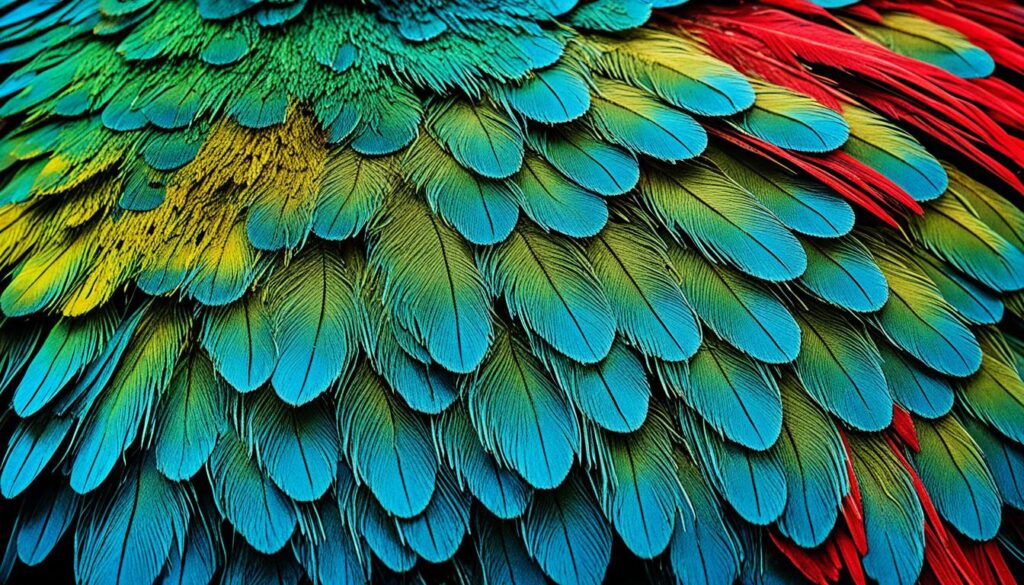
Nutritional Deficiencies and Imbalances
Proper nutrition is essential for maintaining healthy feathers in birds. Nutritional deficiencies and imbalances can significantly contribute to feather loss and poor feather quality. Let’s explore some of the key nutritional factors that can impact feather health.
Vitamin A Deficiency
Vitamin A plays a crucial role in skin and feather development. A deficiency in this essential nutrient can lead to dull, dry, and brittle feathers, as well as an increased susceptibility to feather-related issues. Ensuring adequate vitamin A intake through a balanced diet or targeted supplementation can help address this problem.
Protein and Fatty Acid Deficiencies
Proteins and essential fatty acids are vital for the growth and maintenance of healthy feathers. A deficiency in crude protein below 16% can lead to poorly feathered chicks under 10-15 days of age. Additionally, amino acids like cystine, valine, arginine, and others contribute to proper feather development. Imbalances in these nutrients can result in abnormal feathering and poor feather quality.
To address these deficiencies, it’s essential to provide birds with a well-balanced diet that includes a variety of protein sources and essential fatty acids. Consulting with an avian veterinarian can help determine the appropriate dietary modifications or supplementation required to support optimal feather health.
“Feathers grow continuously during a molt and require dietary amino acids for keratin synthesis. Stress and imbalanced nutrition can lead to a deficiency in essential amino acids, affecting feather growth and quality.”
In addition to vitamin A, protein, and fatty acids, other nutrients like zinc, iodine, and selenium play important roles in feather development and maintenance. Deficiencies in these minerals can also contribute to feather-related issues.
Addressing nutritional deficiencies and imbalances through a well-rounded diet or targeted supplementation, as recommended by an avian veterinarian, can be a key step in resolving feather loss and promoting healthy feather growth in birds.
Injury and Underlying Health Conditions
Feather loss in birds can also be attributed to injuries or underlying health conditions. An injury or illness, such as gout, arthritis, or tumors, can cause pain or irritation, prompting the bird to pick at the affected area and leading to feather loss. These types of feather-loss cases can be particularly challenging to treat, as the root cause may be difficult to alleviate.
According to recent statistics, feather destructive behavior (feather picking) is widespread among captive parrots, especially grey parrots and cockatoos, but can affect any pet bird. This behavior can lead to baldness, damage to underlying tissues, bleeding, infections, and permanent harm to feather follicles. Interestingly, feather picking is less common in wild birds compared to captive birds due to decreased mental and social stimulation in captivity.
Injuries or underlying health conditions that can contribute to feather loss in birds include:
- Gout: A painful condition caused by the buildup of uric acid crystals in the joints, leading to inflammation and potentially feather loss.
- Arthritis: Chronic joint inflammation that can cause discomfort and lead to feather picking behavior.
- Tumors: Abnormal growths that can press on or irritate the skin, causing the bird to pick at the affected area and lose feathers.
Diagnosing the underlying cause of feather loss in these cases often requires a thorough veterinary examination, including a detailed medical history and possibly additional tests like bloodwork, X-rays, or skin biopsies. Treating the root cause of the problem is essential for managing feather loss and preventing further damage.
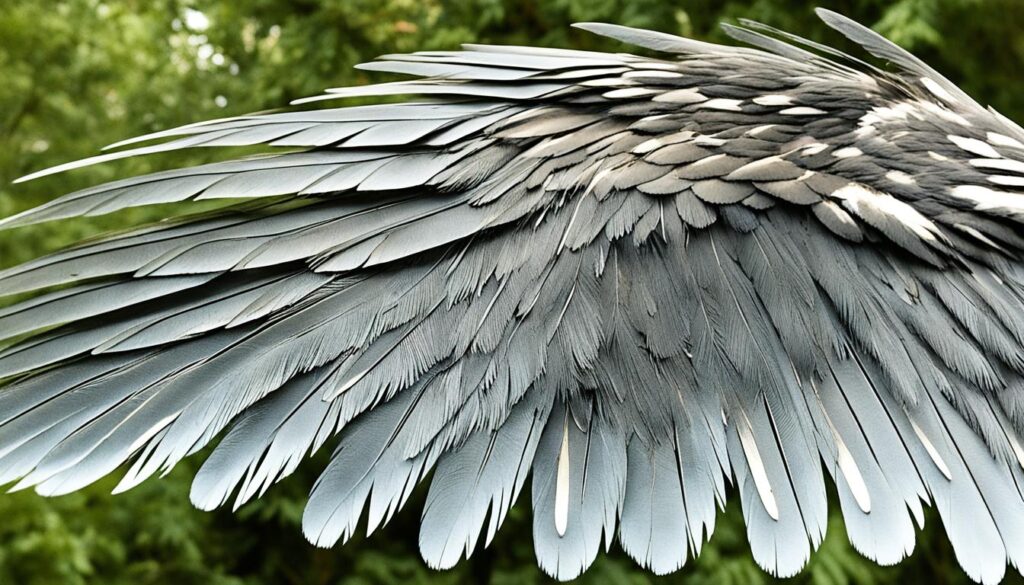
“Feather picking can lead to baldness, damage to underlying tissues, bleeding, infections, and permanent harm to feather follicles.”
how to treat feather loss in birds
Addressing feather loss in birds requires a methodical approach to identify the underlying cause. Once the root issue has been determined, a personalized treatment plan can be implemented to address the problem and promote healthy feather regrowth.
Identifying the Cause
The first crucial step in treating feather loss is to pinpoint the cause. This may involve a comprehensive veterinary examination, including diagnostic tests such as blood work, fecal analysis, and skin or feather biopsies. The veterinarian will also review the bird’s diet, environment, and any behavioral patterns that may contribute to the feather loss.
Common causes of feather loss in birds include viral diseases, parasitic infestations, bacterial and fungal infections, nutritional deficiencies, injury, and underlying health conditions. Identifying the specific trigger is essential for developing an effective treatment plan.
Veterinary Diagnosis and Treatment
Once the cause of the feather loss has been determined, the veterinarian can recommend the appropriate treatment. This may include medications, dietary adjustments, or environmental modifications, depending on the underlying issue. In some cases, the use of an Elizabethan collar may be necessary to prevent further feather-picking while the bird’s feathers regrow.
Proper veterinary care and a tailored treatment plan are crucial for addressing feather loss in birds and ensuring their overall health and well-being. By working closely with a qualified avian veterinarian, bird owners can effectively treat the condition and support the bird’s natural feather regeneration process.
“Addressing the root cause of feather loss is essential for long-term solutions rather than just treating the symptoms.”
Behavioral and Psychological Causes
Feather loss in birds can also stem from behavioral and psychological factors. Stress, unhappiness, and frustration can lead to feather-picking and self-mutilation. Behavioral causes of feather loss may include changes in the home environment, lack of attention, or inadequate environmental enrichment. Psychological causes of feather loss can arise from boredom and a lack of mental stimulation.
Unhappiness and Stress
Birds are highly sensitive creatures, and factors like household changes, insufficient interaction with their owners, or a lack of appropriate toys and activities can cause them significant stress and feather loss. This stress can manifest in self-destructive behaviors, such as excessive feather-plucking or even skin-tearing.
Boredom and Lack of Stimulation
Intelligent bird species, like African gray parrots and cockatoos, are particularly prone to boredom and feather loss if their psychological needs are not met. Without engaging activities and a stimulating environment, these birds may resort to feather-damaging behaviors out of sheer boredom.
Addressing the underlying behavioral and psychological causes of feather loss is crucial. Environmental enrichment, behavioral modification techniques, and in some cases, medication can help alleviate these issues and promote healthy feather growth in birds.
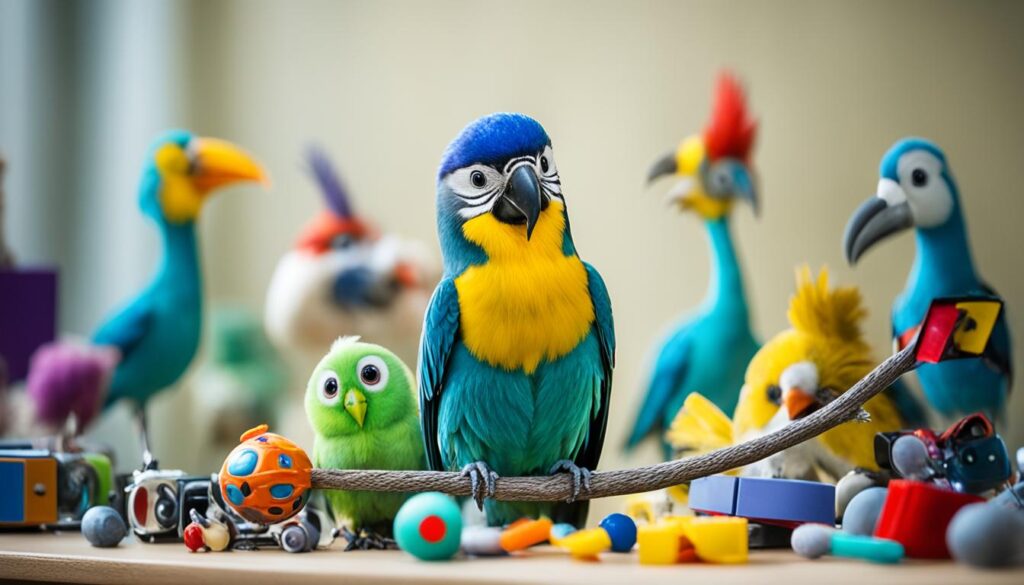
“Feather picking is an obsessive behavior seen particularly in parrots, with common areas affected being the breast, inner thighs, legs, under the wings, and the center of the back.”
Cage Mate Aggression
Feather loss in birds can often be attributed to aggression from their cage mates. Cage mate aggression is a common behavior that can lead to significant feather loss and other health issues for the victim bird. Understanding the causes and signs of this problem is crucial for effectively addressing and preventing it.
According to recent statistics, the occurrence rate of feather loss due to cage mate aggression in pet birds ranges from 10% to 35%. Male birds are involved in these incidents 60% more often than females, and birds kept in communal aviaries exhibit cage mate aggression 20% more frequently than those housed individually. Introducing a new bird to an existing pair in a cage results in aggression occurrences in 40% of cases.
Behavioral changes are a common sign of cage mate aggression, with 75% of bird owners reporting observing such changes in birds involved in these incidents. Feather plucking is the most common form of aggression, accounting for 50% of reported cases. In severe cases, 30% of birds develop stress-related health issues.
“Providing enrichment activities in cages reduces the likelihood of cage mate aggression by 15%.”
If a cage mate is suspected of causing feather loss through aggression or harassment, the victim bird should be separated for a minimum of six weeks to allow the feathers to regrow. This can help determine if cage-mate trauma is the root cause of the problem. In some cases, permanent separation of the birds may be necessary to prevent further feather loss.
By understanding the dynamics of cage mate aggression and taking appropriate steps to address it, bird owners can effectively prevent feather loss and ensure the well-being of their feathered companions.
Environmental Factors
In addition to viral diseases, parasitic infestations, and nutritional deficiencies, environmental factors can also contribute to feather loss in birds. Exposure to air pollutants and irritants can have a detrimental impact on a bird’s plumage, leading to premature feather shedding.
Air Pollutants and Irritants
Cigarette smoke, fumes from non-stick cookware, and harsh household cleaning products can all irritate a bird’s sensitive skin and feathers. These environmental factors causing feather loss can trigger inflammation and discomfort, ultimately resulting in the bird picking or plucking at its own feathers.
Cage Trauma and Improper Wing Trimming
Poorly designed or maintained bird cages can also lead to feather loss. If a bird gets caught in the cage, it can suffer from cage trauma and feather loss. Additionally, improper wing trimming can damage the feathers, causing them to fall out prematurely.
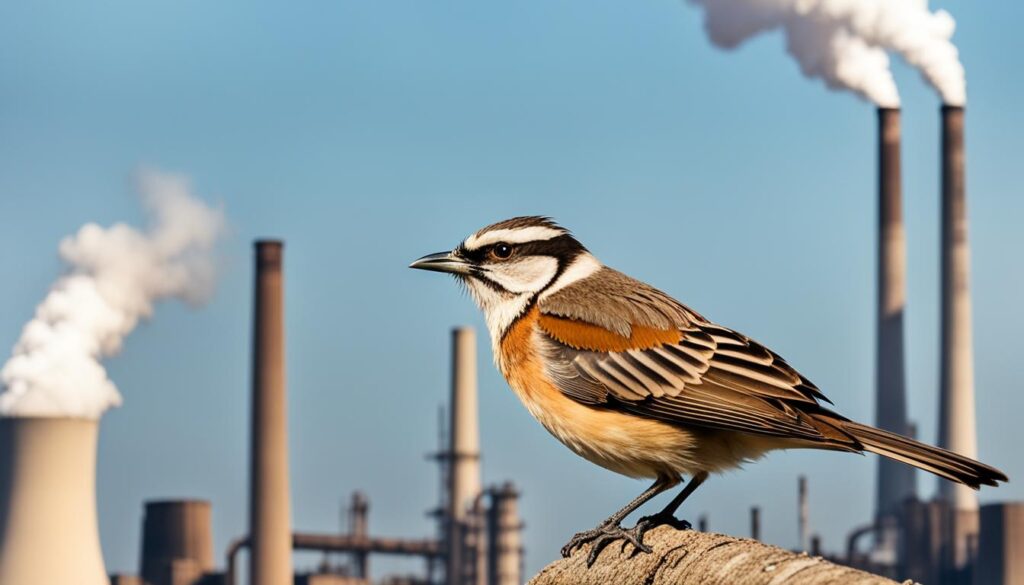
Providing a clean, well-ventilated environment and ensuring proper cage setup and wing trimming are essential in preventing environmentally-induced feather loss. Regular veterinary check-ups and monitoring can also help identify and address any underlying issues before they lead to significant feather loss.
Preventing Feather Loss
Maintaining the health and beauty of a bird’s plumage is essential for their well-being. To prevent feather loss in birds, it’s crucial to focus on providing a stimulating and stress-free environment. This involves incorporating various forms of environmental enrichment and ensuring the bird’s basic needs are met to reduce stress.
Enrichment and Stress Reduction
Birds thrive when they have ample opportunities to engage in natural behaviors. Offering a variety of toys, perches, and activities can help alleviate boredom and provide the necessary mental and physical stimulation. This environmental enrichment not only prevents feather loss but also promotes overall well-being.
- Provide a diverse selection of chew toys, mirrors, and foraging items to encourage natural behaviors.
- Rotate toys and perches regularly to keep the bird’s environment interesting and engaging.
- Ensure the cage is spacious enough for the bird to move around comfortably and spread its wings.
- Minimize environmental stressors such as loud noises, sudden movements, and unfamiliar individuals.
Annual Veterinary Check-ups
Regular veterinary check-ups are essential for identifying and addressing any underlying health issues that may contribute to feather loss in birds. These annual visits allow your avian veterinarian to thoroughly examine your bird, diagnose any problems, and prescribe appropriate treatments or management strategies.
- Schedule annual wellness exams to monitor your bird’s overall health and well-being.
- Discuss any changes in your bird’s feather condition, behavior, or appetite with your veterinarian.
- Follow your veterinarian’s recommendations for maintaining your bird’s feather health and preventing future issues.
By providing a stimulating environment, reducing stress, and staying proactive with regular veterinary check-ups, you can effectively prevent feather loss in birds and maintain their beautiful plumage.
Conclusion
Feather loss in birds can have a variety of underlying causes, from viral diseases and parasitic infestations to nutritional deficiencies and behavioral issues. Identifying the root cause through a comprehensive veterinary examination and diagnostic testing is the crucial first step in addressing feather loss effectively.
With proper treatment, environmental modifications, and preventative care, many birds can regain their healthy plumage and restore their natural beauty. By understanding the complex factors that contribute to feather loss, pet owners and avian veterinarians can work together to implement a tailored plan that addresses the specific needs of each individual bird.
Ultimately, the conclusion on treating feather loss in birds is that a proactive, multifaceted approach is essential. By addressing the underlying causes, providing appropriate medical care, and creating a nurturing, enriched environment, bird owners can help their feathered companions thrive and maintain their vibrant, healthy appearance.
FAQ
What are the common causes of feather loss in birds?
Feather loss in birds can be caused by a variety of factors, including viral diseases, parasitic infestations, bacterial and fungal infections, nutritional deficiencies, injuries, and underlying health conditions.
What are the physical and behavioral signs of feather loss in birds?
Physical signs of feather loss include bare skin patches, broken or disfigured feathers, and a generally unkempt appearance. Behavioral signs may include excessive preening, feather plucking, and self-mutilation.
How do viral diseases like PBFD and polyomavirus contribute to feather loss?
Viral diseases such as psittacine beak and feather disease (PBFD) and polyomavirus can suppress the immune system and lead to abnormal feather growth and easy shedding, resulting in feather loss and disfigurement.
What role do parasitic infestations play in causing feather loss in birds?
Parasitic infestations, such as Knemidokoptes (scaly face and leg), red mites, feather mites, and lice, can cause skin irritation and feather-picking behavior, leading to feather loss.
How can bacterial and fungal infections contribute to feather loss in birds?
Bacterial infections, like Staphylococcus and Pseudomonas, and fungal diseases, such as Aspergillus and Candidiasis, can cause skin irritation and feather disorders, leading to feather loss.
What nutritional deficiencies can lead to feather problems in birds?
Vitamin A deficiency, as well as a lack of adequate protein or essential fatty acids, can affect normal feather growth and development, resulting in feather loss or disorders.
How can injuries and underlying health conditions contribute to feather loss?
Injuries or illnesses, such as gout, arthritis, or tumors, can cause pain or irritation, prompting the bird to pick at the affected area and leading to feather loss.
What are the steps to treat feather loss in birds?
The first step is to identify the underlying cause through a veterinary examination and diagnostic tests. Once the cause is determined, the veterinarian can recommend appropriate treatment, which may include medications, dietary changes, or behavioral modifications.
How can behavioral and psychological factors contribute to feather loss?
Stress, unhappiness, boredom, and a lack of mental stimulation can lead to feather-picking and self-mutilation behaviors, resulting in feather loss.
What role does cage-mate aggression play in feather loss?
If a cage-mate is suspected of causing feather loss through aggression or harassment, the victim bird should be separated for at least six weeks to allow the feathers to regrow and determine if cage-mate trauma is the root cause.
How can environmental factors contribute to feather loss in birds?
Exposure to air pollutants, such as cigarette smoke or household cleaning products, as well as cage trauma and improper wing trimming, can irritate a bird’s skin and feathers, leading to feather loss.
How can I prevent feather loss in my bird?
To prevent feather loss, it’s essential to provide a stimulating and stress-free environment, ensure the bird’s basic needs are met, and schedule regular veterinary check-ups to identify and address any underlying issues.
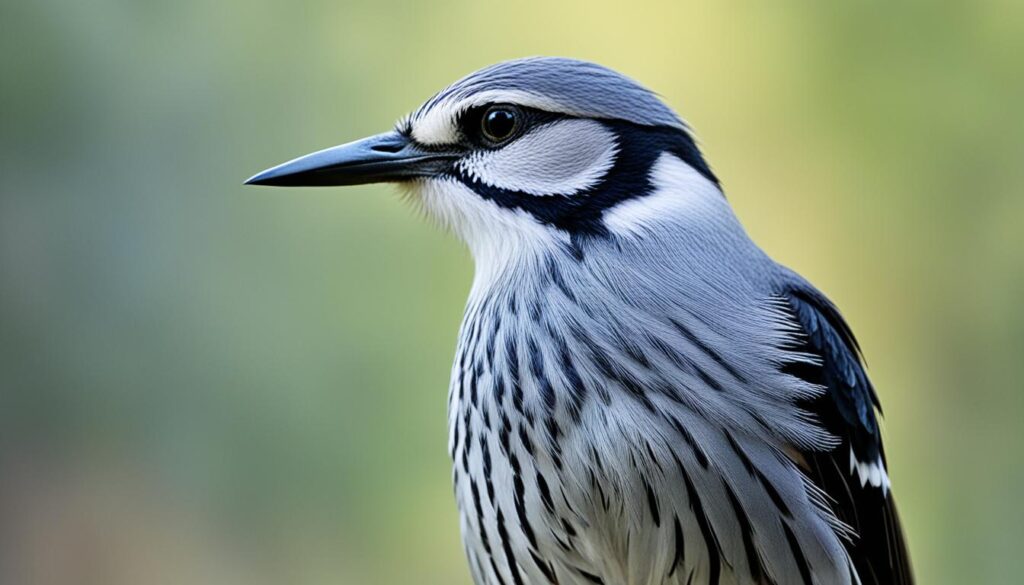

перепродажа аккаунтов birzha-akkauntov-online.ru/
услуги по продаже аккаунтов https://marketplace-akkauntov-top.ru/
купить аккаунт magazin-akkauntov-online.ru/
купить аккаунт услуги по продаже аккаунтов
маркетплейс аккаунтов соцсетей безопасная сделка аккаунтов
продажа аккаунтов маркетплейс аккаунтов соцсетей
магазин аккаунтов социальных сетей магазин аккаунтов
Account exchange buyverifiedaccounts001.com
Buy Pre-made Account accountsmarketplacepro.com
Accounts for Sale Secure Account Sales
Account Acquisition Account Purchase
Accounts marketplace Verified Accounts for Sale
Account Trading Platform Account Buying Service
Account Selling Platform Account Market
Sell accounts Account marketplace
Account Catalog https://buyaccounts001.com/
Account exchange Profitable Account Sales
Sell Account Sell accounts
accounts marketplace database of accounts for sale
account market https://bestaccountsstore.com/
account acquisition website for selling accounts
accounts marketplace accounts marketplace
website for selling accounts account catalog
sell pre-made account account trading
guaranteed accounts buy and sell accounts
account trading service buy accounts
accounts market website for selling accounts
account store buy pre-made account
guaranteed accounts accounts for sale
account acquisition buy accounts
accounts marketplace https://accounts-buy.org/
account marketplace accounts for sale
I know this website provides quality dependent articles and other stuff, is there
any other web page which offers these kinds of stuff in quality?
Check out my page; Nordvpn Coupons Inspiresensation (http://Cfg.Me/)
account selling platform secure account sales
account selling service https://social-accounts-marketplace.org/
sell account gaming account marketplace
account selling service buy and sell accounts
sell pre-made account account sale
account market secure account purchasing platform
secure account sales buy and sell accounts
account exchange account selling platform
online account store account store
website for selling accounts ready-made accounts for sale
gaming account marketplace account acquisition
buy account guaranteed accounts
account trading service buy and sell accounts
buy accounts https://accounts-offer.org/
account marketplace https://accounts-marketplace.xyz
marketplace for ready-made accounts https://buy-best-accounts.org
guaranteed accounts https://social-accounts-marketplaces.live/
nordvpn coupon 350fairfax
I know this web site gives quality depending content and additional material, is
there any other site which presents these things in quality?
account selling service https://accounts-marketplace.live
verified accounts for sale https://social-accounts-marketplace.xyz/
account selling platform https://buy-accounts.space
sell accounts https://buy-accounts-shop.pro/
profitable account sales https://accounts-marketplace.art
account market https://social-accounts-marketplace.live
secure account purchasing platform https://buy-accounts.live
verified accounts for sale https://accounts-marketplace.online
database of accounts for sale https://accounts-marketplace-best.pro
площадка для продажи аккаунтов https://akkaunty-na-prodazhu.pro/
маркетплейс аккаунтов kupit-akkaunt.xyz
маркетплейс аккаунтов магазины аккаунтов
продажа аккаунтов https://akkaunt-magazin.online/
маркетплейс аккаунтов akkaunty-market.live
магазин аккаунтов маркетплейсов аккаунтов
продать аккаунт купить аккаунт
магазин аккаунтов https://online-akkaunty-magazin.xyz
купить аккаунт https://akkaunty-dlya-prodazhi.pro/
маркетплейс аккаунтов kupit-akkaunt.online
buy aged facebook ads account buy facebook accounts for advertising
fb accounts for sale https://buy-ad-account.top
buy a facebook ad account buying facebook account
buy facebook ad account https://buy-ads-account.click/
facebook account sale https://ad-account-buy.top
buying facebook accounts buy accounts facebook
facebook accounts to buy https://ad-account-for-sale.top
buy facebook ad accounts https://buy-ad-account.click
facebook accounts to buy https://ad-accounts-for-sale.work
buy google ads verified account buy aged google ads accounts
old google ads account for sale buy-ads-accounts.click
buy facebook accounts for advertising buy facebook profiles
google ads accounts for sale https://ads-account-for-sale.top
sell google ads account buy google ad account
buy google ads invoice account https://buy-ads-invoice-account.top
buy verified google ads accounts google ads account for sale
buy google ads agency account https://buy-ads-agency-account.top
buy aged google ads accounts google ads agency accounts
buy google adwords accounts https://buy-verified-ads-account.work
buy facebook business account buy-business-manager.org
buy google adwords accounts https://ads-agency-account-buy.click